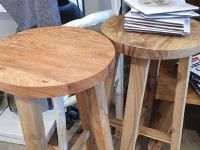How to Care for your Kentia Palm
A 5 minute read by Peter Worsp
Kentia Palm is a species of flowering plant in the palm family ‘Arecaeae’, endemic to Lord Howe Island in Australia. It is also widely grown on Norfolk Island. It is a relatively slow-growing palm, eventually growing up to 10m tall by 6m wide. It’s fronds can reach 3m long.
The palm is an elegant plant, popular for growing indoors, requiring little light. Outdoors, it prefers a tropical region but will grow in a cooler climate, and can tolerate temperatures down to -5°C but only for a few hours; normal temperatures should not go below 10°C. It grows readily outside in areas such as southern Australia and northern New Zealand, where it is fairly common in private gardens or as a street tree.
Planting
Plant your Kentia Palm in a potting soil mix that drains well and contains sand and peat. The pot used for planting should have a hole in the bottom so water can drain quickly. Once planted, the plant can stay in the container for three to five years before it needs repotting.
Position
Place the plant in a room or area that receives bright indirect light. If spotting appears on the top fronds of the plant, this is an indication that it is getting too much bright light.
Watering
Water the Kentia Palm only when the top one/two inches of soil begins to dry out. When watering, let the water drain into the saucer and discard the excess water. Overwatering may cause the roots to rot. Check the plant leaves for signs of either overwatering or underwatering. If leaf fronds start to yellow and then turn brown, you are overwatering the plant. However, leaf tips that droop and turn brown are a sign of underwatering. Provide the plant with adequate humidity levels. Normally this plant likes a humid environment. To care for Kentia Palms properly, mist the plant leaves with tepid water to ensure optimum humidity conditions.
Feeding
Feed the Kentia Palm Yates Thrive Houseplant food during the plants growing season, which is spring and summer. Monthly feedings are suitable for this plant. For proper use of fertiliser, follow the directions on the product label.
Pests
Check your plant for signs of pests, mites and mealybugs love Kentia Palms as much as you do. To prevent infestation, spray the plant with lukewarm water regularly, use Enspray99 or Mavrik at first signs of insects.




